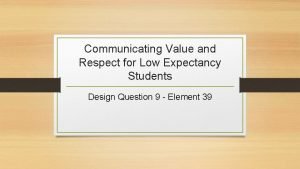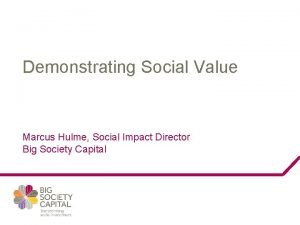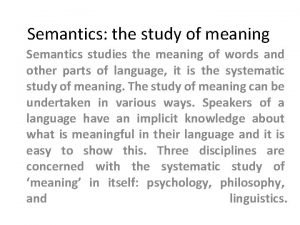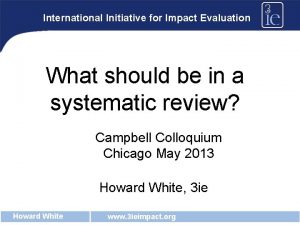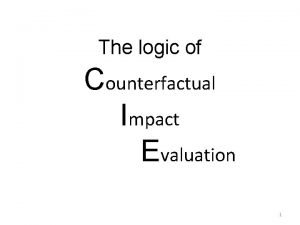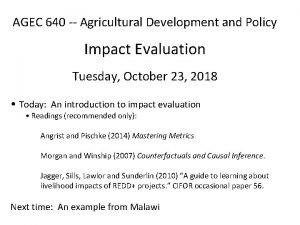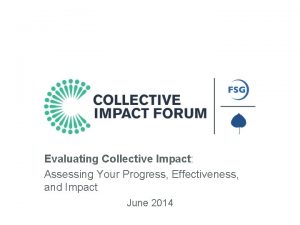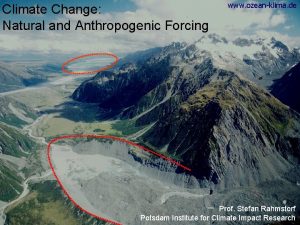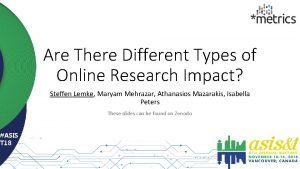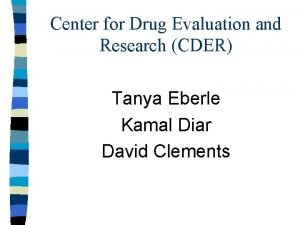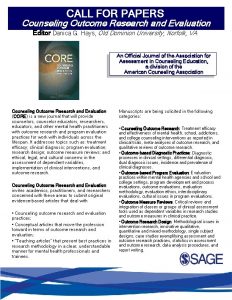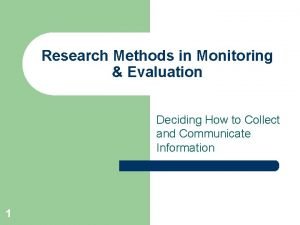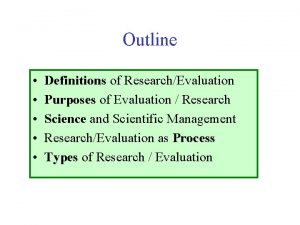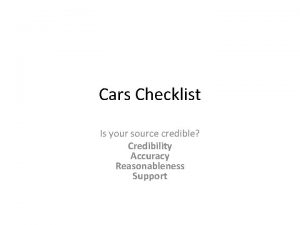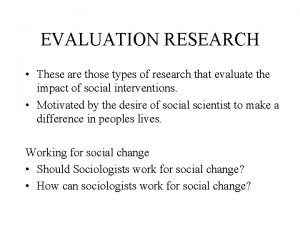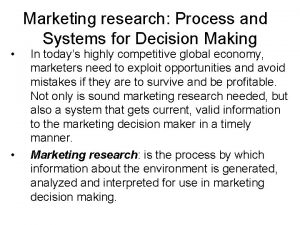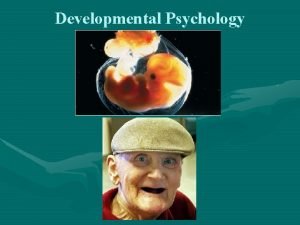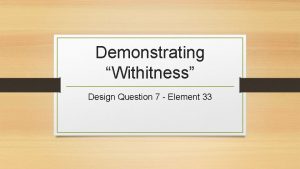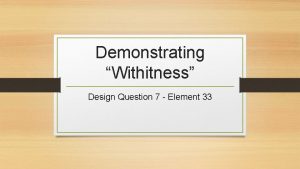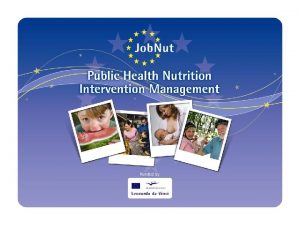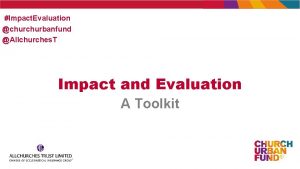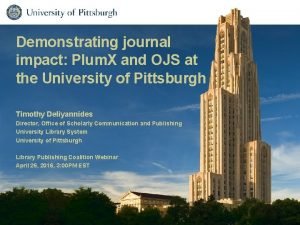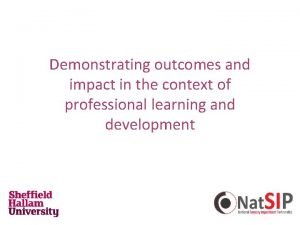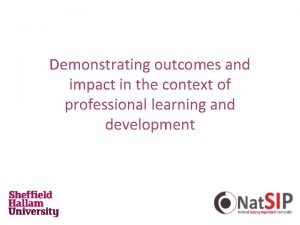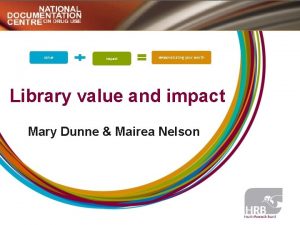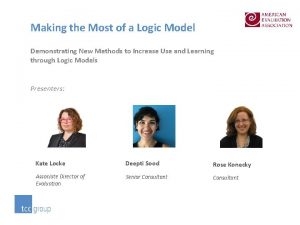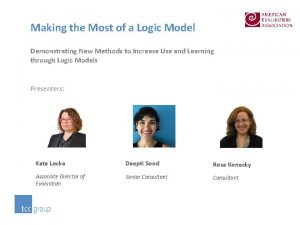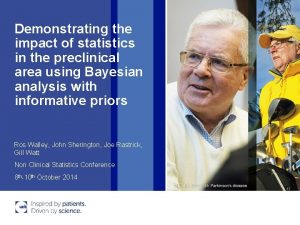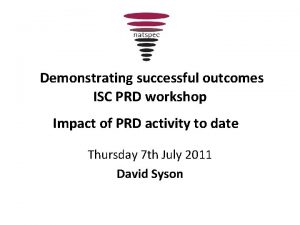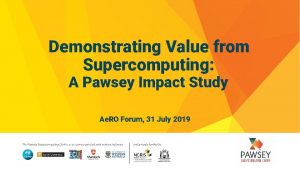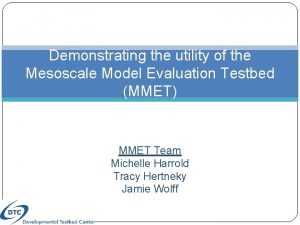Making and demonstrating research and evaluation impact in


































- Slides: 34

Making and demonstrating research and evaluation impact (in an era of austerity) Sandra Nutley


My knowledge base Research Unit for Research Utilisation Developing cross-sector knowledge on research use Education Healthcare Social Care Criminal Justice www. ruru. ac. uk Using Evidence: How research can inform public services (Nutley, Walter and Davies, Policy Press, 2007)

An era of austerity: a UK-centric view? • Yes, but not limited to the UK • Brings the issue of making and demonstrating impact into sharp relieve, especially after the boom years • Australia may not be immune: ‘Some believe that the current boom could end as soon as 2014’ (The Economist 28/5/11)

Impact on research & evaluation: threat or opportunity? • UK: ‘Arguably the role of social research becomes more important to guide practice in an era of austerity than one of affluence’ (SRA 2010) • USA: ‘There seems to be broad [bipartisan] agreement: We need an evidence-based system to guide future budget decisions that assesses the relative performance and impact of all government programs’ (Center for American Progress, July 2011) Underpinning rationale: Evidence-based policies and practices ‘more likely to be better informed, more effective and less expensive’ (Campbell et al 2007)

Threat more of a reality in UK • Job cuts for researchers in government • Research and evaluation budgets slashed • Researchers & evaluators having to do more with less But • Research impact demands have raised status of applied/policyrelated research in universities • Politicians still reach for research as a tactic ‘One person's riot is another’s research grant’

My questions • Why has social research and evaluation been viewed as dispensable when the going gets tough? • What challenges need to be tackled in order to increase and demonstrate the impact of research and evaluation? Some answers in form of 8 emerging lessons

Some reflections • Policy makers and practitioners tend not to recognise influence of research and evaluation • Unrealistic ambitions and expectations • Some persistent problems in supply and demand, and insufficient focus on what happens in between

Recognising research use & impact is hard because ‘policy making’ is complex SOMETIMES: • clearly defined event • explicit decisions • involving known actors • conscious deliberation • defined policies • policy fixed at implementation OFTENTIMES: • ongoing process • piecemeal: no single decision • many actors • muddling through • policies emerge and accrete • shaped through implementation The rational high ground The swampy lowlands

Research used in many ways MORE CONCEPTUAL USES Awareness Knowledge & understanding Persuasion INSTRUMENTAL USES Changing attitudes, perceptions, ideas Decision PROBLEM REFRAMING Practice & policy changes Implementation Evaluation & Confirmation The “enlightenment” role of research (Weiss)

Enlightenment use: promoting new ways of thinking… Service user engagement… Decarceration policies… Patient safety… Enhancing self-care… Importance of informal carers… The happiness and well-being agenda… Harm reduction in substance misuse…

Lesson 1: Pay more attention to tracing research impact Not been good at revealing and relating persuasive research impact stories – a challenging task Need to refine our methods and tools: – Construct a convincing impact narrative: dealing with complexity, attribution and additionality – Consider conceptual and instrumental impacts (and symbolic use) – Account for the difference between actual and potential impacts: receptivity of context

Need to be aware of possible unintended consequences • Research and evaluation funds may be increasingly targeted on short term and low risk projects • A tendency to over-emphasise positive and intended impacts, and underplay unintended and dysfunctional consequences • How do we safeguard serendipity, critique and paradigm challenging research and evaluation?

Lesson 2: Set realistic ambitions and expectations about research use • Evidence-informed not evidencedetermined policy: value judgements are important • Research and evaluation studies can rarely provide the definitive word • A cautious, ‘experimental’ approach to policy making

Addressing supply, demand, and that in between Stocks or reservoirs of research and evaluation-based knowledge Evidence demand in political and professional worlds, and wider society

Supply deficits • Lack of timely and accessible research that addresses policy/practice-relevant questions • Better at understanding and illuminating problems rather than identifying possible solutions • Too much unwitting replication of studies • Paucity of good quality studies of intervention effectiveness (prevention and ‘treatment’ interventions) • Insufficient attention paid to cost-effectiveness • Insufficient mining of secondary data sources • Equivocal attitude to ‘engaged’ research in university research community

Lesson 3: Improve the supply of relevant, accessible & credible evidence… but don’t stop there • Better R&D strategies • Address methodological competency and capacity internally and externally (and incentives) • Revisit research & evaluation commissioning processes • Support synthesis of existing studies • Better dissemination and archiving

Demand deficits • Research evidence low in politicians’ hierarchy?

Policy Makers’ Hierarchy of Evidence • • • ‘Experts’ evidence (incl. consultants and think tanks) Opinion-based evidence (incl. pressure groups) Ideological ‘evidence’ (incl. party think tanks) Media evidence Internet evidence Lay evidence (constituents’, citizens’ experiences) ‘Street’ evidence (urban myths, accepted wisdom) Cabbie’s evidence Research Evidence Source: Phil Davies, 2007

Demand deficits • Research evidence low in politicians’ hierarchy? • Certainly ministerial differences in emphasis • Politicised decision making more likely at times of crisis (Peters 2011) • Practitioners have varying incentives to pay attention to research

Lesson 4: Shape – as well as respond to – the demand for evidence in policy and practice settings • Formal government commitment to an evidence-informed approach • Improve analytical skills of policy makers and practitioners • Address incentives • Work with advocacy organisations to shape context for specific findings

Connecting supply and demand

What image best represents how you think about the main challenges? A E B F C D G H

Challenge of linking two worlds? • Divergent – interests, priorities, incentives, language, dynamics – conceptions of knowledge and time-scales – status and power Research Policy • Leading to – communication difficulties – mismatch between supply and demand – rejection and implementation failure

But many players in research use process Multiple interests, many connections & pathways to impact University and college researchers Research institutes and independent evaluators Think tanks and knowledge brokers Research funders Media Audit, inspection and scrutiny regimes Politicians Government analysts Lobbyists and advocacy groups Civil servants Service providers Professional bodies Loc govt officers Service users Political advisors Wider community

Lesson 5: Develop multifaceted strategies to address interplay between supply & demand Moving away from ideas of ‘packaging’ knowledge and enabling knowledge transfer – recognising instead: • Players and processes more important than products • Importance of context • Interaction with other types of knowledge (tacit; experiential) • Multi-voiced dialogue • ‘Use’ an interactive, non-linear, social & political process

Three generations of knowledge to action thinking • Knowledge transfer • Knowledge a product – • Knowledge exchange • Knowledge integration degree of use a function of effective packaging • Knowledge the result of social & political processes – degree of use a function of effective relationships and interaction • Knowledge embedded in systems and cultures – degree of use a function of effective integration with organisations and systems Source: Best et al 2008

Generic features of effective practices to increase research impact · Research must be translated - adaptation of findings to specific policy and practice contexts · Enthusiasm- of key individuals - personal contact is most effective · Contextual analysis - understanding and targeting specific barriers to, and enablers of, change · Credibility - strong evidence from trusted source, inc. endorsement from opinion leaders · Leadership - within research impact settings · Support - ongoing financial, technical & emotional support · Integration - of new activities with existing systems and activities

Lesson 6: Recognise role of dedicated knowledge broker organisations/ networks Three brokerage frameworks • Knowledge management - facilitating creation, diffusion and use of knowledge • Linkage and exchange - brokering the relationship between ‘creators’ and ‘users’ • Capacity building - improving capacity to interpret and use evidence, and produce more accessible analytical reports Based on Oldham and Mc. Lean 1997

Lesson 7: Target multiple voices to increase opportunities for evidence to become part of policy discourse • Feeding evidence into wider political & public debate • Deliberative inquiry, citizen juries, etc • More challenging approach for governments – ‘letting go’ • More challenging role for researchers and research advocates – contestation and debate

Lesson 8: Evaluate (KE) strategies to improve research use and learn from this • Rarely done in any systematic way • KE an immature discipline: under-theorised and limited empirical evidence • Underdeveloped evaluation frameworks and tools

Conclusions (or delusions/illusions? ) • No room for complacency • Making an impact on public policy and practice is challenging at all times • Crises tend to unsettle existing patterns of policy making and create opportunities for innovation and learning • Researchers & evaluators need to provide compelling ideas and persuasive evidence in innovative and efficient ways

Thank You Sandra. Nutley@ed. ac. uk www. ruru. ac. uk

Any questions?
 Demonstrating value and respect for low expectancy students
Demonstrating value and respect for low expectancy students T-tess domain 3 examples
T-tess domain 3 examples Demonstrating social value
Demonstrating social value Types of meaning
Types of meaning International initiative for impact evaluation
International initiative for impact evaluation 70000/65
70000/65 Impact evaluation
Impact evaluation Collective impact evaluation
Collective impact evaluation War making and state making as organized crime summary
War making and state making as organized crime summary Research gate
Research gate What is inferring
What is inferring Ozeanklima
Ozeanklima Ecrq
Ecrq Types of research impact
Types of research impact Center for drug evaluation and research
Center for drug evaluation and research Counseling outcome research and evaluation
Counseling outcome research and evaluation Research methods in monitoring and evaluation
Research methods in monitoring and evaluation Evaluation research definition
Evaluation research definition Research action communication evaluation
Research action communication evaluation Cars checklist for research source evaluation
Cars checklist for research source evaluation Types of evaluation research
Types of evaluation research Types of evaluation research
Types of evaluation research Applied research in marketing
Applied research in marketing Marketing research in decision making
Marketing research in decision making Scope definition in research
Scope definition in research Contrast applied research and basic research
Contrast applied research and basic research 40 days baby in womb
40 days baby in womb Applied vs fundamental research
Applied vs fundamental research Examples of conclusive research design
Examples of conclusive research design Practical research nature of inquiry and research
Practical research nature of inquiry and research Problem identification research
Problem identification research Research report vs research proposal
Research report vs research proposal Methodology vs method
Methodology vs method Appendix example
Appendix example What is research gap meaning
What is research gap meaning
